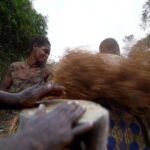Archaeology: Differences in Neanderthal and Palaeolithic human childhood stress
Neanderthal children (who lived between 400,000 and 40,000 years ago) and modern human children living during the Upper Palaeolithic era (between 50,000 and 12,000 years ago) may have faced similar levels of childhood stress but at different developmental stages, according to a study published in Scientific Reports. The authors suggest that these findings could reflect differences in childcare and other behavioural strategies between the two species.
Laura Limmer, Sireen El Zaatari and colleagues analysed the dental enamel of 423 Neanderthal teeth (from 74 Homo neanderthalensis individuals) and 444 Upper Palaeolithic humans (from 102 Homo sapiens individuals). They investigated early-life stress in these individuals by identifying horizontal grooves of thinner enamel, which previous research has demonstrated can be associated with childhood stressors such as illness, infections, malnutrition, nutritional deficiencies, and trauma.
The authors found that the overall likelihood of enamel defects was similar in both Neanderthal and Upper Palaeolithic modern human teeth but that the developmental stages that these defects were likely to occur in varied between both species. Among Upper Palaeolithic humans, enamel defects were more likely to occur around the ages weaning is estimated to have occurred — between one and three years of age — than after the estimated weaning period. Among Neanderthals, enamel defects were more likely to begin to appear with the expected weaning period (around one year of age), before peaking during the post-weaning period (between two and four years of age) and then decreasing.
The authors hypothesise that the stress experienced by Palaeolithic human children during weaning could have been caused by increasing energy demands raising the risk of malnutrition. They propose that Upper Palaeolithic humans may have helped reduce developmental stress in children after weaning through strategies such as encouraging prolonged dependence on parents, exploiting resources more efficiently, and providing children with access to food. They suggest that these strategies may not have been used by Neanderthals and that this could have contributed to long-term survival advantages for modern humans compared to Neanderthals.

Bibliographic information:
Limmer, L.S., Santon, M., McGrath, K. et al. Differences in childhood stress between Neanderthals and early modern humans as reflected by dental enamel growth disruptions, Sci Rep 14, 11293 (2024), DOI: https://doi.org/10.1038/s41598-024-61321-x
Press release from Scientific Reports.



